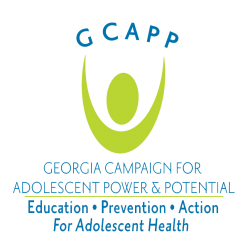Each of us has experienced some type of trauma, whether it is collective trauma- like a natural disaster- or a personal trauma- like sexual abuse. In the classroom, trauma can show up in ways that look like behavior issues and actions that require discipline. Participants will learn small changes that can make a big difference in the classroom for students who have experienced trauma.
Training Hub
The Sex Education Collaborative Training Hub lists trainings for sex educators, facilitators, and other professionals on best practices for sharing important information with clients and the public. From teaching anatomy inclusively to effectively addressing bias in the classroom to addressing racial justice and equity in sex education, the Training Hub includes trainings, technical assistance, and policy support from state, regional, and national leaders in the field of sex education.
Please note: The Training Hub includes both in-person and online professional trainings. If you see a training you are interested in and it isn’t listed as virtual, please reach out directly to any of our members to find out what's possible!
Trainings Offered by State-Based and National Organizations
Displaying results 16 - 20 of 154Creating Safer Spaces in the Classroom
- Indicator 1 (K-12): Demonstrate three techniques to create an inclusive and affirming learning environment. (S)
- Indicator 3 (K-12): Describe three elements of a trauma-informed approach to sex education.
- Indicator 4 (K-12): Demonstrate three strategies of a trauma-informed approach to sex education (e.g. giving trigger warnings before content on sexual assault and allowing students the right to pass as appropriate, etc.). (S)
"They Want Me to Teach What?!" Stepping into the Sex Educator Role
This full-day training is for educators who are newly tapped to teach sex education to teach them the necessary foundational skills. We will cover group rights, setting the classroom tone, managing potential challenges, establishing appropriate boundaries, and exploring personal values as they relate to teaching about sexuality. Participants will leave this training with an increase in knowledge, skills, and comfort to successfully teach sex ed. Registration link here.
- Indicator 1 (K-12): Demonstrate three techniques to create an inclusive and affirming learning environment. (S)
- Indicator 2 (K-12): Demonstrate three strategies for creating culturally responsive classrooms. (S)
- Indicator 3 (K-12): Describe three elements of a trauma-informed approach to sex education.
- Indicator 4 (K-12): Demonstrate three strategies of a trauma-informed approach to sex education (e.g. giving trigger warnings before content on sexual assault and allowing students the right to pass as appropriate, etc.). (S)
- Indicator 1 (K-12): Describe the importance of teachers’ maintaining professional boundaries when teaching sex education.
- Indicator 2 (K-12): List three factors to consider regarding personal disclosure when teaching sex education
- Indicator 3 (K-12): Demonstrate how to reduce the impact of educators’ passive and/or active personal disclosure on the educational environment. (S)
- Indicator 4 (K-12): Explain the roles and responsibilities of a mandated reporter.
- Indicator 1 (K-12): Demonstrate the ability to build rapport with students. (S)
- Indicator 2 (K-12): Demonstrate three student-centered instructional approaches that support a variety of learning styles. (S)
- Indicator 3 (K-12): Explain the differences between positive vs. shaming approaches to teaching sex education.
- Indicator 5 (K-12): Describe three effective strategies for practicing skills with students.
- Indicator 1 (K-12): Explain three reasons why it is important to respond to every question students ask when teaching sex education.
- Indicator 2 (K-12): Demonstrate the ability to effectively respond to three different types of challenging questions. (S)
- Indicator 1 (K-12): Describe three health (e.g. physical, social and/or emotional) and/or academic benefits of sex education for young people
- Indicator 2 (K-12): Describe state and/or district laws, policies, and standards that relate to sex education where one teaches.
- Indicator 1 (K-12): Explain the differences between personal and universal values relating to sexuality.
- Indicator 2 (K-12): Describe how verbal and nonverbal expression of personal values, and comfort with topics related to sex education, could impact one’s teaching
- Indicator 3 (K-12): Explain the importance of educators refraining from sharing their personal values when implementing sex education.
- Indicator 4 (K-12): Demonstrate the ability to respond effectively to students’ values-based comments and questions. (S)
Social Emotional Learning Webinar
Social Emotional Learning (SEL) has become a framework that many schools are using to bolster students' academic achievements as well as their social and emotional skills. Teaching SEL in the context of comprehensive sexuality education can help young people develop the understanding and skills needed to navigate healthy relationships and healthy sexuality throughout their lives. In this webinar, participants will examine SEL foundations and how to utilize core understandings to enhance their sexuality education classrooms, including a focus on decision-making, relationship building and consent. Registration link here.
- Indicator 1 (K-12): Demonstrate three techniques to create an inclusive and affirming learning environment. (S)
- Indicator 5 (K-12): Describe three effective strategies for practicing skills with students.
- Indicator 1 (K-12): Describe three health (e.g. physical, social and/or emotional) and/or academic benefits of sex education for young people
Challenging Rape Culture
In this interactive training, participants will gain a better understanding of the intersection of sexual violence and incidence and prevalence of STIs/HIV while identifying (and challenging) their own values and beliefs around rape culture. The training will include lecture, facilitated discussion, and engaging hands-on activities for various professionals that work with youth.
In this training, participants will:
- Gain an understanding of the difference between rape culture and consent culture.
- Review relevant and current data on sexual violence and STIs.
- Examine the connection between sexual violence and STIs.
- Reframe curriculum and other program content to challenge rape culture and promote consent culture.
- Indicator 1 (K-12): Demonstrate three techniques to create an inclusive and affirming learning environment. (S)
- Indicator 4 (K-12): Demonstrate three strategies of a trauma-informed approach to sex education (e.g. giving trigger warnings before content on sexual assault and allowing students the right to pass as appropriate, etc.). (S)
- Indicator 2 (K-12): List three factors to consider regarding personal disclosure when teaching sex education
- Indicator 4 (K-12): Explain the roles and responsibilities of a mandated reporter.
- Indicator 5 (K-12): Explain the state- and district-mandated reporting requirements and procedures.
- Indicator 3 (K-12): Explain the differences between positive vs. shaming approaches to teaching sex education.
- Indicator 5 (K-12): Describe three effective strategies for practicing skills with students.
- Indicator 6 (K-12): Describe three strategies for actively involving parents, caregivers, and other trusted adults in a sex education program.
- Indicator 7 (K-12): Demonstrate the ability to analyze and tailor lesson plans to match the age, developmental stages, cultural backgrounds, and other identities of students. (S)
- Indicator 5 (K-12): Describe three ways to help students set and respect personal boundaries in relationships.
- Indicator 4 (6-12): Explain three facilitators and three barriers to STD/STI testing and treatment.
- Indicator 1 (K-12): Describe three health (e.g. physical, social and/or emotional) and/or academic benefits of sex education for young people
- Indicator 2 (K-12): Describe state and/or district laws, policies, and standards that relate to sex education where one teaches.
Screen Time, Safety and Burnout – Teachers and Students
Transitioning our work and school to a virtual setting has led to less engagement, but virtual spaces can promote connection as well. The human brain is wired for connection, and many are feeling disconnected from their jobs, school, and peers. Join us to discuss tips for preventing burnout and creating and promoting safety during screen time.
Additional Trainings offered by out-of-state organizations
- 1 of 49
- next ›
MOASH provides support with policy development, interpretation, and implementation at the state, school district, and K–12 school building levels. Policy topics include primarily sexual health education, sexual and reproductive health rights, and LGBTQIA+ inclusion and affirmation. MOASH works alongside communities to address their unique concerns and needs. Support may include technical assistance, training, and resources. For more information about policy assistance, please contact MOASH’s Advocacy Director, Kelly Stec at kelly.stec@moash.org


